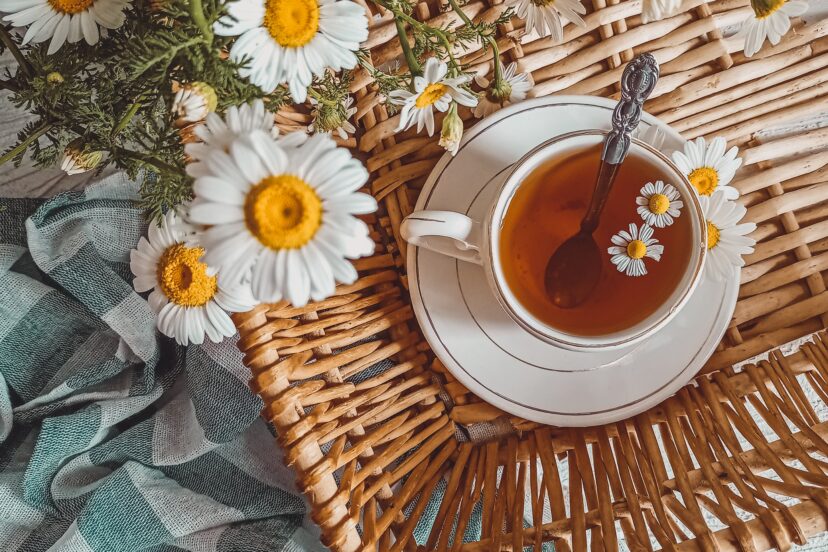Best Chamomile Tea
Best Chamomile Tea
The best chamomile tea will be the one you grow yourself organically with companion planting and no use of chemicals. The second best way you can get the very best camomile tea is buy it online. Why do you need camomile tea? We will show you in this article some of the benefits to be gained.
I. Five Key Benefits and Uses of Chamomile
Chamomile is one of the most ancient medicinal herbs known to mankind. It belongs to the Asteraceae/Compositae family and is represented primarily by two types commonly used:
1: German Chamomile (Matricaria recutita) and
2: Roman Chamomile (Chamaemelum nobile).
Chamomile has been used for centuries for its healing properties, and its applications range from serving as a calming tea to being an ingredient in various cosmetic and medicinal products.
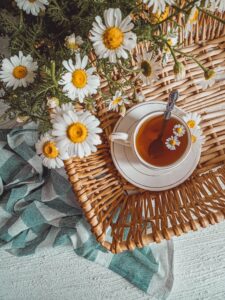
1. Soothing: Best Chamomile Tea
Chamomile tea is renowned for its calming effects, often used to improve sleep quality, reduce stress, and promote relaxation.
2.Anti-inflammatory Properties
It contains several compounds that can reduce inflammation. This makes it beneficial for addressing conditions like digestive upset, skin irritations, and more.
3. Skin Care
Chamomile is used in topical applications to soothe irritated skin, reduce inflammation, and heal wounds. It’s a common ingredient in skincare products for its gentle, healing properties.
4. Digestive Aid
It has been traditionally used to treat various gastrointestinal issues, including gas, indigestion, diarrhea, nausea, and vomiting
5. Immune Booster:
Some studies suggest that chamomile can enhance the immune system, potentially reducing the risk of colds and infections.
II. Four Specific Benefits of Chamomile
Beyond its general uses, chamomile has been researched for specific health benefits:

a. Sleep and Relaxation:
Chamomile contains apigenin, an antioxidant that binds to certain receptors in the brain, potentially reducing insomnia and promoting sleep.
b. Digestive Health:
Its anti-inflammatory and antispasmodic properties help in soothing the digestive tract, making it effective for treating an upset stomach, indigestion, and gas.
c. Skin Health:
Topical applications of chamomile have been found to effectively treat skin irritations, eczema, wounds, and burns due to its anti-inflammatory and antimicrobial properties.
d. Cardiovascular Health:
Some studies suggest chamomile tea may improve heart health by lowering blood pressure and cholesterol levels, though more research is needed in this area.
Chamomile’s multifaceted benefits and ease of cultivation make it a valuable herb for both gardeners and those interested in natural remedies. Whether you’re growing it for its beauty, its companionship with other plants, or its therapeutic properties, it offers something for everyone.
Let’s explore some specific areas of interest focusing on recipes for chamomile tea blends, insights into health studies, and its role in permaculture.
III. Recipes for Chamomile Tea Blends
Chamomile tea is a versatile base for various herbal tea blends, each offering unique benefits and flavors. Here are a couple of blends you might enjoy:
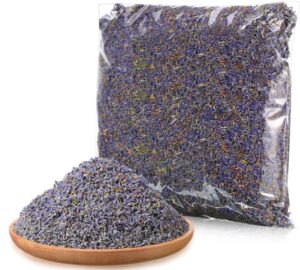
-
Chamomile Lavender Tea:
- Chamomile and Lavender tea is a soothing blend that’s perfect for relaxation before bedtime. Mix 2 parts chamomile flowers with 1 part dried lavender flowers. Steep in boiling water for 5 to 10 minutes. Lavender adds a calming aroma and enhances the sleep-inducing properties of chamomile. Lavender chamomile tea is a must try.
2. Chamomile, Mint, and Lemon Balm Tea:
Ideal for digestive health. Combine 2 parts chamomile flowers, 1 part peppermint leaves, and 1 part lemon balm leaves. This blend is refreshing and can help soothe stomach aches and promote digestion.
These are just starting points. Feel free to adjust the ratios or add other herbs like ginger for a warming effect or hibiscus for a tart flavor and a beautiful color.
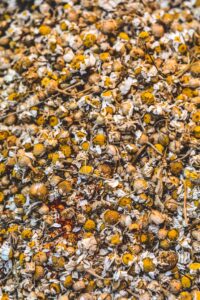
IV. Health Studies on Chamomile
Chamomile has been the subject of numerous studies investigating its potential health benefits:
- Sleep and Anxiety: A study published in the Journal of Advanced Nursing found that new mothers who drank chamomile tea for two weeks reported better sleep quality and fewer symptoms of depression.
- Cardiovascular Health: Research in the Journal of Agriculture and Food Chemistry suggests that regular consumption of chamomile tea might contribute to improved cardiovascular health, although the exact mechanisms and the extent of benefits require further study.
- Diabetes Management: A study in the Journal of Endocrinological Investigation indicated that daily consumption of chamomile tea could have beneficial effects on blood sugar control in individuals with Type 2 diabetes, suggesting a potential adjunct treatment for diabetes management.
It’s important to note that while these studies are promising, chamomile should not replace conventional treatments prescribed by healthcare professionals. Always consult with a healthcare provider before making significant changes to your health regimen.
V. Chamomile in Permaculture
In permaculture, chamomile is valued for its contributions to garden health and ecology:
- Companion Planting: Chamomile helps improve the growth and flavor of many plants, such as cabbage, onions, and beans, by attracting beneficial insects and repelling pests.
- Soil Health: As a dynamic accumulator, chamomile can draw up nutrients from deep within the soil, making them available to other plants when its leaves decompose on the surface.
- Beneficial Insects: Chamomile flowers attract pollinators and beneficial insects, which can help control pest populations naturally.
Incorporating chamomile into your garden or permaculture design not only enhances the beauty and biodiversity of your space but also supports the health and productivity of your garden ecosystem.
VI. Five Benefits and Applications of Chamomile
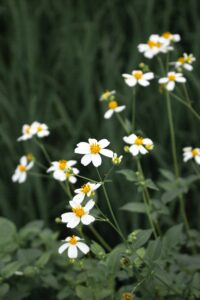
therapeutic benefits are broad and varied, making it a staple in herbal medicine cabinets. Here’s a closer look at how chamomile can be used to address specific health concerns:
a. Stress and Anxiety Relief:
Chamomile is widely regarded for its natural sedative properties. Drinking chamomile tea or using chamomile extract can help reduce stress and anxiety levels. A clinical trial published in Phytomedicine found that chamomile extract was effective in reducing moderate-to-severe symptoms of generalized anxiety disorder (GAD).
b. Skin Health:
Due to its anti-inflammatory and antimicrobial properties, chamomile is used in topical treatments to soothe skin irritations, such as eczema, psoriasis, and sunburn. A study in the Journal of Wound Care reported that topical application of chamomile cream was beneficial in the healing of skin wounds.
c. Digestive Health:
Chamomile can alleviate various digestive issues, including indigestion, nausea, and gas. Its antispasmodic effects help relax the muscles of the digestive tract, which can relieve symptoms of irritable bowel syndrome (IBS) and other gastrointestinal disorders. Research in the Journal of Gastroenterology suggests that chamomile tea significantly improves gastrointestinal symptoms in patients with IBS.
d. Menstrual Pain:
The antispasmodic and anti-inflammatory properties of chamomile can also be beneficial in relieving menstrual cramps. A study in the Journal of Agricultural and Food Chemistry found that consuming chamomile tea led to a reduction in the severity of menstrual cramps, likely due to its effects on reducing muscle spasms and inflammatory responses.
e. Sleep Quality:
Chamomile’s mild sedative effect can improve sleep quality and duration. It is especially beneficial for people experiencing insomnia or sleep disturbances. A study published in Sleep Medicine reviewed the effects of chamomile tea on sleep quality and depression in the elderly, finding improvements in sleep quality among participants.
VII. How to Use Chamomile for Therapeutic Purposes
a. Best Chamomile Tea:
The most common and easiest way to enjoy chamomile’s benefits is by drinking it as a tea. Steep 2-3 teaspoons of dried chamomile flowers in hot water for about 5 minutes.

b. Topical Applications:
For skin irritations or wounds, apply creams or ointments containing chamomile extract directly to the affected area. Alternatively, a chamomile tea bag cooled in the refrigerator can be applied as a compress.
c. Essential Oil:
Chamomile essential oil can be used in aromatherapy to reduce anxiety and promote relaxation. It can be diffused in the air or applied topically when diluted with a carrier oil.
d. Dietary Supplements:
<p>Chamomile is available in capsules or liquid extract form for those who prefer not to drink tea. It’s important to follow the dosage instructions on the product label.
When incorporating chamomile into your health routine, it’s crucial to consider any potential allergies, especially if you’re allergic to plants in the daisy family. As with any herbal remedy, consult with a healthcare provider before use, especially if you are pregnant, nursing, or taking other medications.
Would you like to explore another aspect of chamomile or have any specific questions on its uses and benefits?
Certainly! Let’s delve deeper into how chamomile contributes to stress and anxiety relief, offering a more detailed perspective on its mechanisms, applications, and the science backing its efficacy.
VIII. Chamomile for Stress and Anxiety Relief: An In-Depth Look
Chamomile, particularly from the species Matricaria recutita (German variety) and Chamaemelum nobile (Roman variety), has been extensively used in traditional medicine for its calming and sedative effects. Its popularity as a natural remedy for stress and anxiety is supported by both historical use and scientific research.
a. Mechanisms of Action
The anxiolytic (anxiety-reducing) and sedative properties of chamomile are attributed to a range of bioactive compounds, including flavonoids, terpenoids, and apigenin. Among these, apigenin is particularly significant due to its ability to bind to benzodiazepine receptors in the brain, which are involved in regulating mood and stress responses.
Apigenin: This flavonoid compound is believed to be the primary agent behind chamomile’s anxiolytic effects. By binding to GABA (gamma-aminobutyric acid) receptors, similar to how some pharmaceutical anxiolytics work, apigenin can increase GABA activity in the brain, leading to a calming effect.
Flavonoids and Terpenoids: These compounds also contribute to the overall calming effects of chamomile, possibly through their interactions with other neurotransmitter systems involved in stress and anxiety regulation.

IX. Scientific Evidence
Several studies have highlighted chamomile’s effectiveness in managing anxiety:
- A study published in Phytomedicine demonstrated that chamomile extract significantly reduced anxiety symptoms in individuals with generalized anxiety disorder (GAD) compared to placebo.
- Research in The Journal of Clinical Psychopharmacology found that long-term use of chamomile extract could significantly reduce moderate-to-severe symptoms of GAD.
- Another study indicated that chamomile therapy is associated with a reduction in the symptoms of anxiety and depression, showcasing its dual benefits in mood regulation.
X. Applications and Dosage
<h3>a. Best Chamomile Tea Preparation:
For stress and anxiety relief, chamomile tea is often recommended due to its ease of preparation and gentle effect. Brewing 2-3 grams of dried chamomile flowers in hot water for 5-10 minutes is typically advised. Drinking 1-2 cups daily, especially in the evening or during periods of increased stress, can help promote relaxation and improve mood.
b. Supplements:
<p>Chamomile is also available in capsule or liquid extract forms for those who prefer a more concentrated dosage or do not enjoy the taste of tea. It’s important to follow the manufacturer’s dosage recommendations, as concentrations can vary.
c. Safety and Considerations:
While chamomile is generally safe for most people, it can cause allergic reactions in individuals sensitive to plants in the Asteraceae family. Pregnant and breastfeeding women should consult a healthcare provider before using it as a remedy for anxiety.
Chamomile’s reputation as a soothing and medicinal herb extends impressively into the realm of dermatology, where it is celebrated for its potent skin health benefits. This article delves into the specifics of how chamomile promotes skin health, exploring its bioactive compounds, mechanisms of action, and the scientific evidence supporting its effectiveness.
XI. Chamomile and Skin Health: A Closer Look
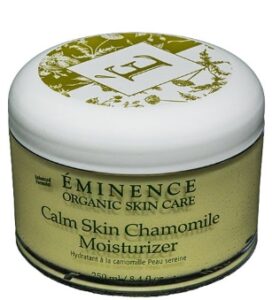
Chamomile, particularly the species Matricaria recutita (German variety) and Chamaemelum nobile (Roman variety, contains a rich profile of bioactive ingredients, including bisabolol, flavonoids, and apigenin. These compounds are key to chamomile’s therapeutic properties, which range from anti-inflammatory and antimicrobial to healing and soothing actions.
a. Key Bioactive Compounds
- Bisabolol: An important component of chamomile oil, bisabolol is known for its anti-inflammatory, healing, and soothing properties. It can penetrate deep into the skin to deliver its therapeutic effects, making it effective for reducing redness, irritation, and discomfort associated with skin conditions.
- Flavonoids: Chamomile’s flavonoids, such as quercetin and luteolin, contribute to its anti-inflammatory and antioxidant activities. They help protect the skin from oxidative stress caused by free radicals, which can lead to premature aging and skin damage.
- Apigenin: This flavonoid has been shown to possess anti-inflammatory, antioxidant, and anti-carcinogenic properties. It plays a role in chamomile’s ability to soothe irritated skin and may contribute to its potential in preventing skin cancer.
b. Mechanisms of Action
- Anti-inflammatory: Chamomile’s anti-inflammatory action is one of its most significant benefits for skin health. By inhibiting the production of inflammatory cytokines and blocking the cyclooxygenase pathway (similar to how NSAIDs work), chamomile can reduce inflammation and soothe irritated skin.
- Antimicrobial: The antimicrobial properties of chamomile help in fighting skin infections caused by bacteria, fungi, and viruses. This makes it beneficial for healing wounds and treating skin conditions like acne and eczema.
- Skin Barrier Enhancement: Chamomile can improve skin hydration and elasticity by enhancing the skin barrier function. This helps in preventing moisture loss and protecting the skin from environmental stressors.
XII. Scientific Evidence and Applications
Several studies highlight chamomile’s effectiveness in treating various skin conditions:
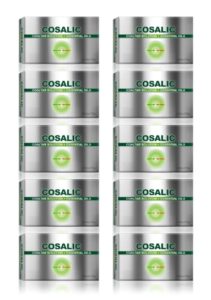
- Wound Healing: Research has shown that chamomile extracts can speed up the wound-healing process, likely due to their anti-inflammatory and antimicrobial properties. This makes chamomile a useful ingredient in creams and ointments for cuts, abrasions, and other skin injuries.
- Dermatitis and Eczema: Studies suggest that topical applications of chamomile can alleviate symptoms of dermatitis and eczema, such as itching, redness, and swelling, making it a natural alternative to steroid creams.
- Acne Treatment: Chamomile’s antimicrobial and anti-inflammatory actions make it a beneficial ingredient in acne treatments. It can help reduce acne lesions and prevent scarring by soothing the skin and fighting bacteria.
XIII. How to Use Chamomile for Skin Health
a. Topical Application:
Chamomile can be applied directly to the skin in the form of creams, ointments, and gels containing chamomile extract. For a homemade remedy, chamomile tea bags cooled in the refrigerator can be used as a compress on irritated or injured skin.
<p> </p>
b. Cha
momile Tea Baths:
Adding cha
momile tea or essential oil to bathwater can provide a soothing experience for the whole body, beneficial for those with skin irritations or seeking to relax their skin.
c. Diluted Essential Oil:
Chamomile essential oil, diluted with a carrier oil like coconut or jojoba oil, can be applied to the skin to soothe irritation, reduce redness, and promote healing.

a.1.Compress
Creating a chamomile compress is a simple and effective way to harness the soothing properties of chamomile for various skin ailments. If you don’t have chamomile tea bags, you can easily use dried chamomile flowers, which are readily available at health food stores or online. Here’s a step-by-step recipe for making and using a chamomile compress, followed by specific uses for this natural remedy.
Chamomile Compress Recipe
Ingredients:
- 2 tablespoons of dried chamomile flowers
- 1 cup of boiling water
Tools:
- A clean bowl
- A clean cloth or cotton pad
- A strainer
Instructions:
1.Steep the Chamomile: Place the dried flowers in a clean bowl. Pour 1 cup of boiling water over the flowers and cover the bowl. Let it steep for 10-15 minutes to allow the chamomile to infuse the water with its therapeutic properties.
2.Strain: After steeping, strain the infusion into another bowl or container, removing all the solid particles. You’ll be left with a chamomile-infused water.
3.Prepare the Compress: Soak a clean cloth or cotton pad in the chamomile-infused water. Squeeze out the excess liquid until the cloth is damp but not dripping.
4.Apply: Gently apply the damp cloth to the affected area of the skin. Leave it on for 10-20 minutes. You can repeat this process 2-3 times a day, depending on the need and response.
5.Storage: If you have leftover chamomile water, store it in the refrigerator for up to 24 hours for reuse. Ensure it’s warmed to a comfortable temperature before applying it to the skin.
a.2. Specific Uses for a Chamomile Compress
-
Soothing Sunburn:
Chamomile’s anti-inflammatory properties help reduce the redness and discomfort associated with sunburn. Apply a chamomile compress to the sunburned area to soothe and calm the skin.
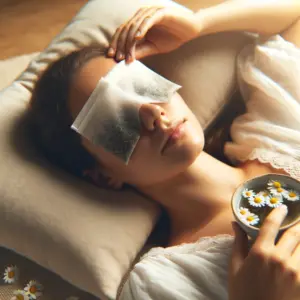
2. Reducing Eye Strain and Puffiness:
Soak two cotton pads in chamomile water and place them over your closed eyelids to relieve strain and reduce puffiness. This is especially refreshing for tired eyes from computer use.
3. Treating Skin Irritations and Rashes:
Apply a chamomile compress to areas affected by skin irritations, rashes, or eczema to reduce inflammation and soothe the skin. Its mild antimicrobial properties can also help prevent infection.
4. Healing Minor Wounds and Cuts:
Chamomile can accelerate the healing process of minor wounds and cuts due to its healing and antimicrobial properties. A compress can be applied to clean wounds to promote healing and prevent infection.
5. Alleviating Menstrual Cramps:
While not applied directly to the skin, a warm chamomile compress placed on the abdomen can help ease menstrual cramps through its antispasmodic properties.
6. Reducing Acne Inflammation:
For acne-prone skin, a chamomile compress can help reduce inflammation and soothe the skin. Its antimicrobial properties may also assist in reducing acne-causing bacteria.
7. Soothing Insect Bites and Stings:
Apply a chamomile compress to insect bites or stings to reduce itching, swelling, and inflammation, providing natural relief from discomfort.
a.3. Tips for Maximum Effectiveness
- Always use a clean cloth or cotton pad to prevent introducing any bacteria to the skin.
- Test the temperature of the chamomile infusion before applying it to ensure it’s comfortable and not too hot.
- For sensitive areas, especially around the eyes, ensure the chamomile water is strained thoroughly to remove all particles that could irritate the eyes.
- If you have a known allergy to plants in the Asteraceae family (such as daisies, ragweed, or marigolds), it’s best to perform a patch test on a small area of skin before applying a chamomile compress more broadly.
Chamomile compresses offer a gentle and natural way to address various skin issues and discomforts, leveraging the herb’s renowned anti-inflammatory and healing properties.
XIV. Chamomile in Permaculture

a. Definition
Permaculture is a term that was originally coined from “permanent agriculture,” and it has since expanded to also mean “permanent culture.” It is a philosophy of gardening and farming that follows the patterns and features observed in natural ecosystems. Permaculture encompasses a range of holistic, sustainable practices that aim to create productive environments which work in harmony with nature, rather than against it.
b. The principles of permaculture involve the following core tenets:
- Care for the earth: Recognizing that the earth is the source of all life and that we must respect and take care of it.
- Care for people: Ensuring that people have access to resources necessary for their existence.
- Fair share: Redistributing surplus to help others and limit consumption to ensure that resources are allocated in a fair and just manner.
Permaculture design seeks to minimize waste, human labor, and energy input by building systems with maximal benefits between design elements to achieve a high level of synergy. These systems are designed to be sustainable and self-sufficient in the long term.
c. In permaculture, it is valued for its contributions to garden health and ecology:
- Companion Planting: Chamomile helps improve the growth and flavor of many plants, such as cabbage, onions, and beans, by attracting beneficial insects and repelling pests.
- Soil Health: As a dynamic accumulator, chamomile can draw up nutrients from deep within the soil, making them available to other plants when its leaves decompose on the surface.
- Beneficial Insects: Chamomile flowers attract pollinators and beneficial insects, which can help control pest populations naturally.
Importing chamomile into your garden or permaculture design not only enhances the beauty and biodiversity of your space but also supports the health and productivity of your garden ecosystem.
XV. Companion Plants for Chamomile:

Chamomile is not only beneficial for humans but also plays a role in the garden by attracting beneficial insects and improving the health of surrounding plants. Companion planting it can enhance the growth, flavor, and health of a variety of plants. For example:
- Vegetables: Chamomile can improve the growth and flavor of cabbages, onions, and cucumbers.
- Herbs: Growing chamomile near herbs like mint, basil, and sage can help in enhancing their essential oil production, thereby improving their flavor and potency.
- Flowers: Chamomile can attract beneficial pollinators while deterring certain pests, making it a good companion for a wide range of flowering plants.
It’s ability to improve soil health and attract beneficial insects makes it a valuable plant in any garden. Furthermore, its flowers can be harvested to make chamomile tea, offering a sustainable way to enjoy its calming benefits.
<p>
<s
trong>XVI. Cultivation Tips for Best Chamomile Tea
Chamomile is relatively easy to grow and can be a delightful addition to your garden, offering both visual appeal and practical benefits.
- Choosing the Right Type: Decide whether you want to grow German Chamomile (Matricaria recutita), which is an annual, or Roman Chamomile (Chamaemelum nobile), a perennial. Your choice might depend on the climate, as well as your specific needs and garden space.
- Planting: the seeds can be sown directly into the ground in spring, after the last frost. They need light to germinate, so simply press them into the soil without covering them. They prefer well-drained soil and a sunny spot but can tolerate partial shade.
- Watering: While chamomile is drought-tolerant once established, keeping the soil evenly moist during the germination and early growth stages is crucial.
- Spacing: If planting multiple chamomile plants, ensure they’re spaced about 8 to 12 inches apart to allow for adequate airflow and growth.
- Harvesting: Flowers can be harvested when they’re fully open, typically in the late spring or summer. They’re best picked in the morning after the dew has evaporated and before the sun is too intense.
XVII. Historical Uses of Chamomile

Chamomile has a rich history of use across different cultures and periods:
- Ancient Egypt: Chamomile was associated with the sun god Ra for its healing properties, particularly in treating fevers and conditions associated with heat.
- Greek and Roman Empires: It was used for its medicinal properties, including as a remedy for skin conditions and as a sedative.
- Middle Ages: Chamomile was used for flavoring beer before hops became the norm. It was also grown in herb gardens for its medicinal qualities.
</p>
XVIII. Conclusion about Best Chamomile Tea
Chamomile’s multifaceted benefits for skin health, driven by its anti-inflammatory, antimicrobial, and antioxidant properties, make it a valuable natural remedy for a wide range of skin conditions. Whether used in commercial skincare products or homemade preparations, it offers a gentle yet effective solution for maintaining healthy, resilient skin.
As with any natural remedy, it’s important to conduct a patch test before widespread application, particularly for those with sensitive skin or allergies to plants in the Asteraceae family. For persistent or severe skin conditions, consulting a healthcare provider or dermatologist is recommended.
For those exploring natural remedies for stress and anxiety relief, chamomile offers a time-tested, research-backed option that can be easily incorporated into daily routines, whether as a soothing tea or a more concentrated supplement form.
XIX. FAQs about best chamomile tea
<h3>1: Can chamomile tea help improve sleep quality?
Answer: Yes, it can improve sleep quality due to its apigenin content, which binds to brain receptors that induce sleepiness and reduce insomnia.
2: Is chamomile effective for skin conditions?
Answer: Chamomile soothes the skin, reduces inflammation, and treats conditions like eczema and sunburn thanks to its anti-inflammatory and antioxidant properties.
3: How does chamomile tea aid digestion?
Answer: IT relaxes the digestive tract muscles, which can alleviate symptoms of indigestion, nausea, and gas.
4: Can chamomile reduce anxiety and stress?
Answer: Yes, it contains compounds that have calming effects on the brain, making it beneficial for reducing anxiety and stress.
5: Does chamomile have any anti-inflammatory benefits?
Answer: Absolutely, it is rich in flavonoids, which exert anti-inflammatory effects that can help with various conditions, including arthritis and menstrual pain.
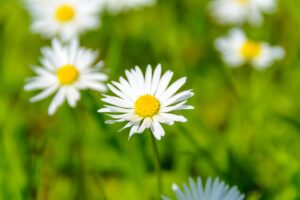
Have fun, New You, Get a Wig instead of Dyeing your Hair
- Realistic-looking Appearance: Are you looking for an eye-catching wig that will grab people's attention? Our long curly wig is a very fashionable designed curly wig with bangs has a natural sheen. Whether viewed from a distance or up close, it looks like the hair grow directly from your scalp, you don’t have to worry about your hair volume anymore. Our blonde long curly wig will provide you a hairstyle so real that people won't spot it unless you tell them, it's so pretty and natural looking
- Comfortable and Suitable Wearing: At only 7.4 oz, our wig with side part for white women is light enough to keep your head away from feeling squashed and weighted down. The length of curly wavy wig is 18", wig cap circumference is 21.5"-22.5", ear to ear is 13.5"-13.75", front to back is 14"-14.5", which fits most head sizes. Kalyss blonde long wig cap has 2 adjustable elastic straps to make sure that the cap stays on the head as firmly as the scalp, and it's easy to put on and take off
- Time-saving Experience: It's not an enjoyable thing to sit in a salon for several hours just to change your hairstyle. From today onwards, you don't need to wait for hours. We have the shoulder length straight hair wig that will save the time you wasted in the salon. The ladies long wig only takes you a few minutes to get the hairstyle you want, even for new to wear synthetic wigs! If you want to be the one who gets the most attention, choosing this natural synthetic wig with bangs will never let you down
- Trustworthy Premium Materials: Kalyss wavy curly blonde wigs are made of high-standard synthetic fibers made in Japan, which have a natural touch and give a better look than human hair. During the design process of our blonde wigs for women, we have incorporated the opinions of our hairstylists with many years of experience, just to create classic and trendy hairstyles for you. The shape of our blonde curly wavy wigs with bangs are long-lasting and stable,no tangle,no smell and the color will never fade out
- Suitable for Various Occasions: Kalyss blonde short curly wigs are ideal options for balancing entertaining and daily life! You can put on our blonde wigs with dark roots with Romantic and passionate look to go to all kinds of parties, such as cosplay events and costume parties. And you can also wear it on a date, at a party, or even in a zoom meeting, and it won't make you look out of place! After you putting on this wig, you will find the uniqueness of our blonde curly wigs for white women
- This wig is a short, pixie cut long on style and fullness. The slightly angled fringe can be worn onto the face or swept away while the razor cut nape creates a soft clean look in the back.
- Basic Cap [also referred to as Capless] - This lightweight cap is constructed with spaces between the wefts to allow for ventilation to keep your scalp cool.
- Adjustable Smooth Velcro Straps - Soft straps adjust up to a 1/2 inch in either direction to achieve a more comfortable and secure fit.
- Velvet Lined Ear Tabs - Contain a wire that bends to conform to the shape of your temples. Constructed with a soft, velvet material for added comfort.
- You need to shook it to loosen it up or you can add to sprinkle a little bit water on it. Then it will look fluffy as the picture.
- Synthetic hair wig.
- Women's wigs and detangling comb.
- Angelica wig with natural tones.
- Long wig with textured layers falling to mid-back.
- Colored and straight hair wigs.
